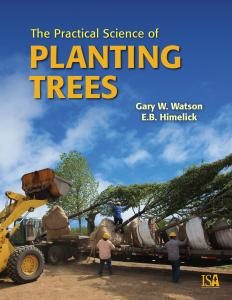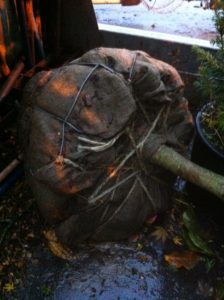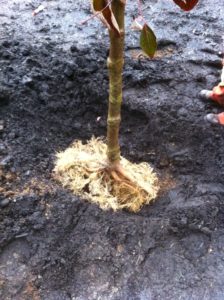Tree planting sounds easy. Dig a hole, get the tree out of the pot and put it in. Backfill. Maybe add water. Done.
Not so fast. Tree planting is a science. The ISA published a book covering just that one topic. There is more to it than landscapers and arborists think. Install crews are usually under pressure to get everything in the ground quickly. Our urban trees would benefit from a slower planting approach.

Trees grown in pots tend to have roots that circle. Most trees have seen a pot in their development. So it was extremely interesting to hear Dr. Bruce Fraedrich lecture on this. He mentioned a study that examined root structure before planting. This was part of his lecture titled “Planning for sustainable management“.

Study
The study used maples (Acer) and oaks (Quercus). Both control tree species were planted the way they came out of the pot.
The study trees, however, had their root balls harshly demolished with hammers. The idea was to have the roots radiate out from the root flare, not circle. Then the trees were planted in the same study plot and observed.
Season 1
In season one, measurements clearly showed the study control trees ahead in growth. This would indicate that the harsh root ball treatment was detrimental. Case closed? Not even close.
Season 2
In season two and subsequent seasons, the study trees pulled ahead of the control trees in growth. So the roots were exposed and examined. It was obvious that both species responded well to their harsh root ball treatments.
Maples had more extensive root systems than the control maples. As for the oaks, they responded by growing thicker roots. In both cases the resulting growth produced healthier trees and also more stable trees. Radiating roots provide more stability than roots that look like they are circling.
It would appear that spending extra minutes with each root ball is worth the investment. It leads to healthier and more stable trees.
This is something to think about next time you are planting trees in the landscape.

I

